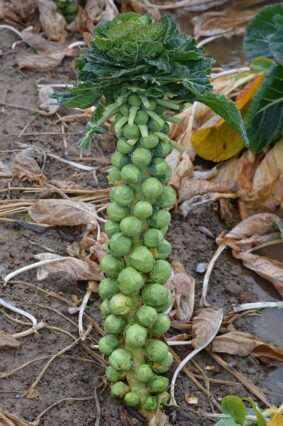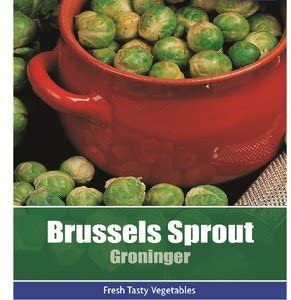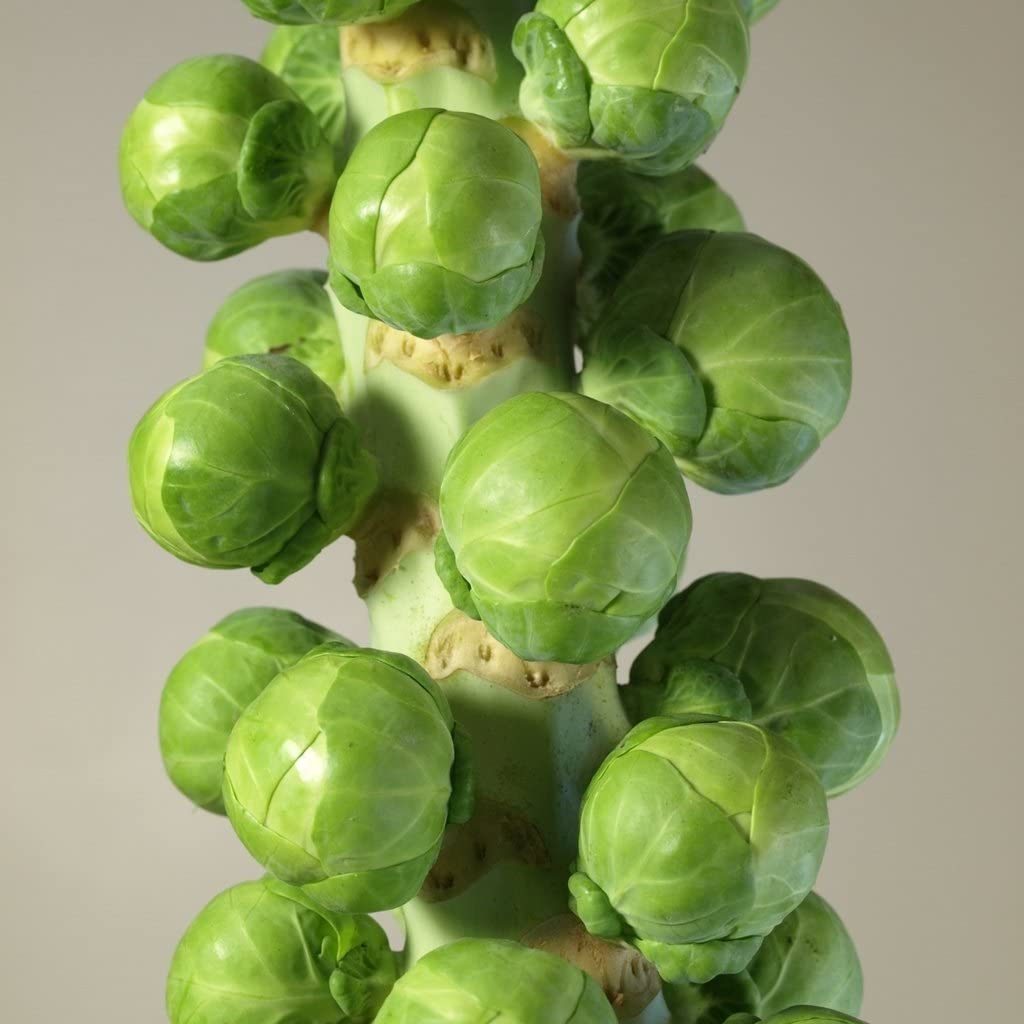Brussels sprouts are vegetables to be enjoyed in autumn through to late winter, depending on whether you plant an early or late variety. The benefit of growing sprouts is not just that they are a healthy food to eat, but they are ready for harvest when there is little other fresh vegetables available in the garden.

When to Sow Brussels Sprout Seeds
In March, April and May, seeds can be sown into trays or pots, to be transplanted later into the garden later.
Sow each seed half an inch deep, and seedling should start to appear approximately 10 days later.
When the plants are 5 inches tall, they can be planted out, but make sure they are hardened off first, so they are used to the outside temperatures. This can be done by leaving plants outside for extended periods over the course of a week. If the weather is cold when planting out, a cloche is useful to help plants get a good start.
Planting Brussels Sprouts
Like most brassicas, Brussels sprouts prefer a firm soil to grow in. The long stems can easily be damaged by wind, so firm rooting will help protect the plant. If you can plant them in a spot that has a natural wind break, even better.
Because of how tall they grow, Brussels sprouts benefit from lots of space around each plant. Each plant should be spaced approximately 25 inches apart, and similar for rows so that you have enough space to walk between your crops.

Caring for Brussels Sprout Plants
Water well in dry weather and apply a good layer of mulch, such as garden compost, around the base of the plant. This helps to keep weeds from growing and allows soil to retain moisture. Feed every 4 weeks with a nitrogen rich, organic fertiliser.
Support the plants with a stake when they grow tall enough to be affected by wind.
As sprouts develop, remove any yellowing leaves at the base of the plant. This will allow the plant to put more energy into the sprouts, rather than the leaves.
Harvesting and Storing Brussels Sprouts
Brussels sprouts crop from November to March, depending on the variety, but the flavour improves after they have had a frost on them.
Sprouts that are on the lower part of the stem are usually ready first. Snap them of when they are a good size to eat, and leave the rest to ripen further. The leaves that grow the top of the stem can also be eaten.
Cut sprouts will last for a week in a refrigerator. Alternatively you can cut the whole stalk and store in a cool place, and the sprouts will be good to eat for longer. Brussels sprout also freeze well, after blanching.

